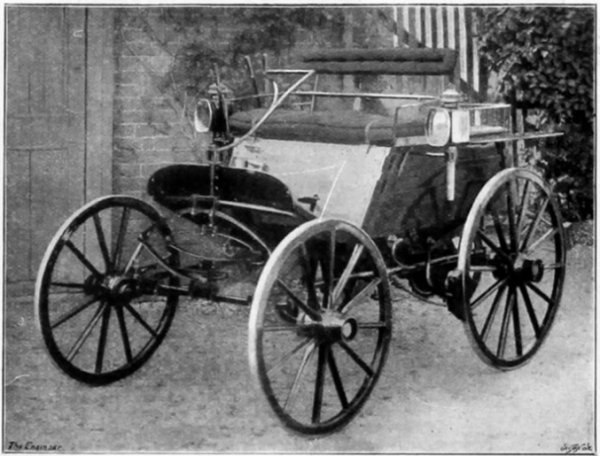the yeovil car
the yeovil car
One of Britain's first automobiles
The Yeovil Car was one of twelve early automobiles designed and produced by Yeovil iron founder and ironmonger James Petter and his twin sons, Ernest and Percival, together with their inventive engineer and designer Ben Jacobs. In 1897 the Petters formed the Yeovil Motor Carriage Company, making small two-person motor carriages at their foundry in Huish / Clarence Street and in conjunction with carriage makers Hill & Boll of Park Road.
This same year the company was one of four that offered automobiles for trials at Chelsea and was exhibited at the 1897 Motor Car Exhibition held at the Crystal Palace, both events being organised by 'The Engineer' magazine.
The following description of the Yeovil Car is from the June 1897 edition of 'The Engineer' magazine "The Yeovil motor car is a light business carriage for two persons. It is driven by a two-cylinder Petter patent engine working on the Otto cycle, using ordinary petroleum. The cylinders are arranged side by side, and fired alternately. The explosions are effected by means of two ignition tubes, heated by a single blow lamp. The air inlet valves of the motor are operated by the suction of the piston, the exhaust valves by means of levers driven by chain gearing from the crank shaft. There is a choice of 2 gear ratios, providing fast and slow speeds of ten and four miles respectively. The rear axle drives one of the rear wheels of the carriage. A brake is held on the fly-wheel by a spring to control the engine when the carriage is at rest. When the carriage is in motion this brake is held off by a hand lever. Two pairs of ordinary carriage brakes were applied to the rear wheels, and the reversing mechanism provides a strong additional brake in case of emergency."
Another contemporary report stated "The carriage is intended for two persons, with which a speed of ten miles an hour is obtained on level road. It will mount the hills of the neighbourhood with two persons, but larger power would be used for four persons … The exhaust is, we are informed, quite invisible, and the engine almost noiseless. The removable handle was used to start the engine in the first place, and an arrangement is made so that the handle, when put in position, automatically opens the exhaust valve which closes instantly when, a good impulse being given, the handle is withdrawn and the engine starts … Tube ignition is adopted, and a small heating lamp is used … The engine starts in ten minutes and runs, we are told, without attention."
In 1899 Petters announced that they were ceasing development and production of heavy oil carriages to concentrate on electric carriages. However they failed to achieve the commercial success they had hoped for with automobiles and consequently adapted their engines for agricultural and industrial use.
gallery

The "Yeovil Car" with coachwork by Hill & Boll that was clearly a conversion of one of their normal horse-drawn coaches as illustrated in their advertisements. An illustration from 'The Engineer' magazine of 1897.